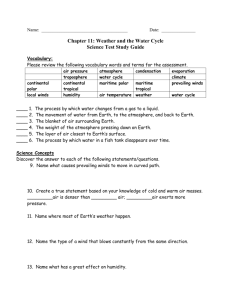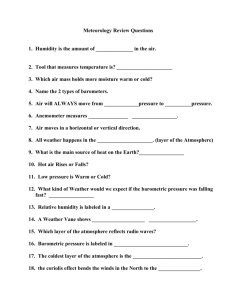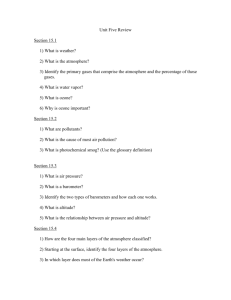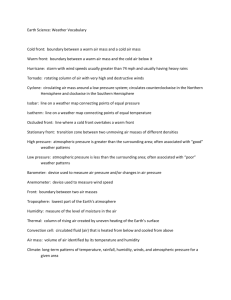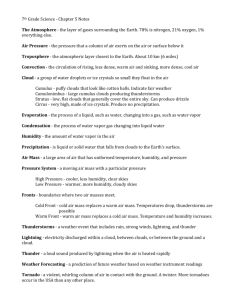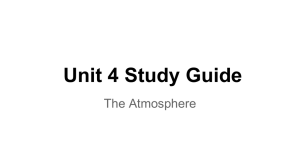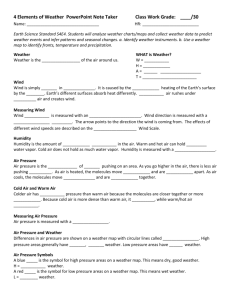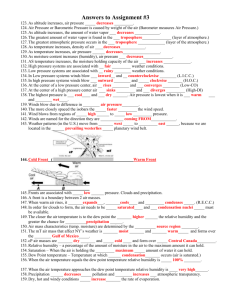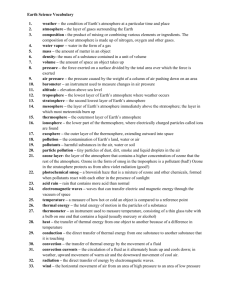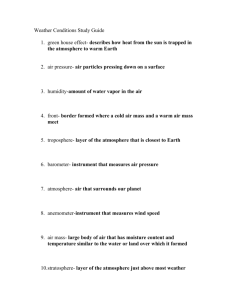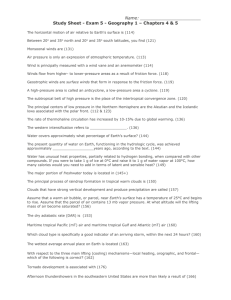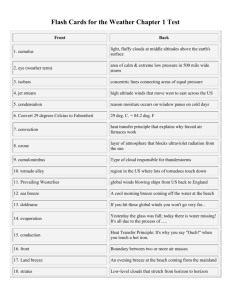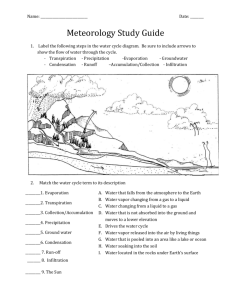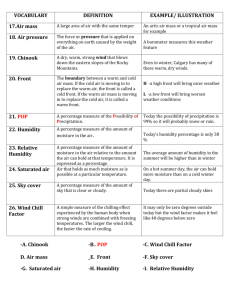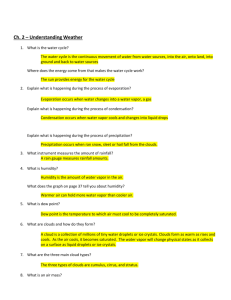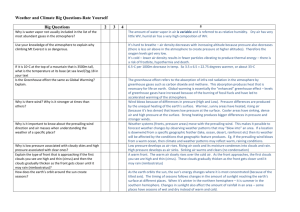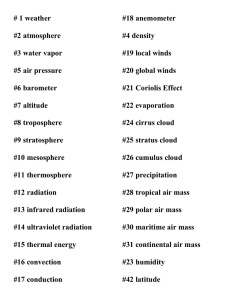Geology Spring Final Review #1 Key Nitrogen Temperature
advertisement
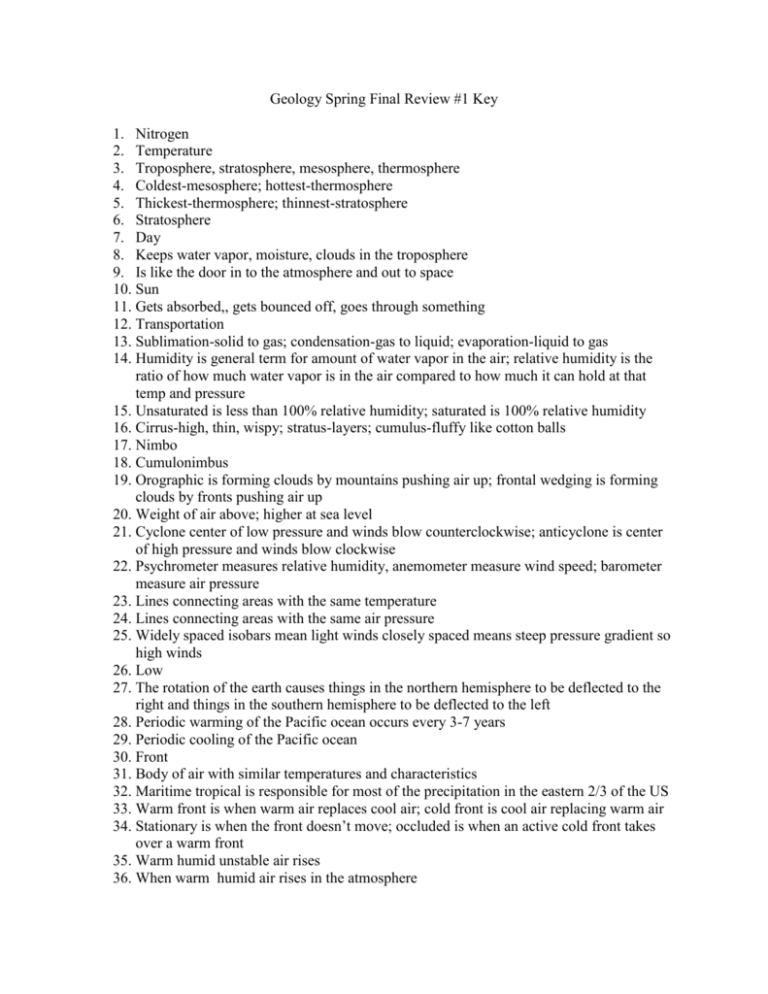
Geology Spring Final Review #1 Key 1. Nitrogen 2. Temperature 3. Troposphere, stratosphere, mesosphere, thermosphere 4. Coldest-mesosphere; hottest-thermosphere 5. Thickest-thermosphere; thinnest-stratosphere 6. Stratosphere 7. Day 8. Keeps water vapor, moisture, clouds in the troposphere 9. Is like the door in to the atmosphere and out to space 10. Sun 11. Gets absorbed,, gets bounced off, goes through something 12. Transportation 13. Sublimation-solid to gas; condensation-gas to liquid; evaporation-liquid to gas 14. Humidity is general term for amount of water vapor in the air; relative humidity is the ratio of how much water vapor is in the air compared to how much it can hold at that temp and pressure 15. Unsaturated is less than 100% relative humidity; saturated is 100% relative humidity 16. Cirrus-high, thin, wispy; stratus-layers; cumulus-fluffy like cotton balls 17. Nimbo 18. Cumulonimbus 19. Orographic is forming clouds by mountains pushing air up; frontal wedging is forming clouds by fronts pushing air up 20. Weight of air above; higher at sea level 21. Cyclone center of low pressure and winds blow counterclockwise; anticyclone is center of high pressure and winds blow clockwise 22. Psychrometer measures relative humidity, anemometer measure wind speed; barometer measure air pressure 23. Lines connecting areas with the same temperature 24. Lines connecting areas with the same air pressure 25. Widely spaced isobars mean light winds closely spaced means steep pressure gradient so high winds 26. Low 27. The rotation of the earth causes things in the northern hemisphere to be deflected to the right and things in the southern hemisphere to be deflected to the left 28. Periodic warming of the Pacific ocean occurs every 3-7 years 29. Periodic cooling of the Pacific ocean 30. Front 31. Body of air with similar temperatures and characteristics 32. Maritime tropical is responsible for most of the precipitation in the eastern 2/3 of the US 33. Warm front is when warm air replaces cool air; cold front is cool air replacing warm air 34. Stationary is when the front doesn’t move; occluded is when an active cold front takes over a warm front 35. Warm humid unstable air rises 36. When warm humid air rises in the atmosphere 37. Fujita 38. Saffir-Simpson 39. Watch-possibility of happening; warning-has been spotted or seen on Doppler radar 40. F5 41. Category 5 42. Weather is daily happenings of the atmospheric conditions; climate is average weather 43. Global warming is the unnatural warming of the earth’s atmosphere; greenhouse effect is the natural warming of the atmosphere that is crucial to survival on earth 44. Closer you are to the tropical zone (equator) the hotter the climate is 45. Generally, the higher in elevation the cooler the climate
